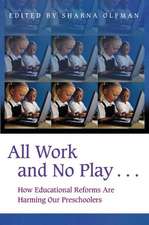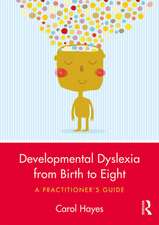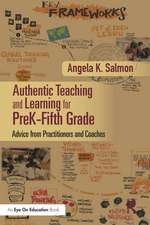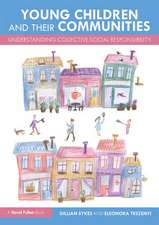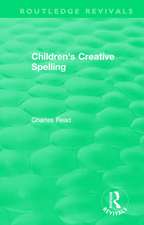The Hundred Languages of Children: The Reggio Emilia Experience in Transformation: Cărți metoda Reggio
Editat de Carolyn Edwards, Lella Gandini, George Formanen Limba Engleză Paperback – 12 dec 2011 – vârsta până la 17 ani
Educators in Reggio Emilia, Italy, use a distinctive innovative approach that supports children's well-being and fosters their intellectual development through a systematic focus on symbolic representation. From birth through age six, young children are encouraged to explore their environment and express their understanding through many modes of expression or "languages," including verbal communication, movement, drawing, painting, sculpture, shadow play, collage, and music. This organic strategy has been shown to be highly effective, as the children in Reggio Emilia display surprising examples of symbolic skill and creativity.
This book describes how the world-renowned preschool services and accompanying practical strategies for children under six in Reggio Emilia have evolved in response to the community's demographic and political transformations, and to generational changes in both the educators and the parents of the children. The authors provide the reader with a comprehensive introduction to the Reggio Emilia experience, and address three of the most important central themes of the work in Reggio in detail: teaching and learning through relationships; the hundred languages of children, and how this concept has evolved; and integrating documentation into the process of observing, reflecting, and communicating.
Preț: 244.70 lei
Preț vechi: 309.41 lei
-21% Nou
46.82€ • 49.15$ • 38.86£
Carte disponibilă
Livrare economică 21 martie-04 aprilie
Specificații
ISBN-10: 0313359814
Pagini: 440
Dimensiuni: 156 x 235 x 33 mm
Greutate: 0.7 kg
Ediția:3
Editura: Bloomsbury Publishing
Colecția Praeger
Seria Cărți metoda Reggio
Locul publicării:New York, United States
Caracteristici
Notă biografică
Descriere
Educators in Reggio Emilia, Italy, use a distinctive innovative approach that supports children's well-being and fosters their intellectual development through a systematic focus on symbolic representation. From birth through age six, young children are encouraged to explore their environment and express their understanding through many modes of expression or "languages," including verbal communication, movement, drawing, painting, sculpture, shadow play, collage, and music. This organic strategy has been shown to be highly effective, as the children in Reggio Emilia display surprising examples of symbolic skill and creativity.
This book describes how the world-renowned preschool services and accompanying practical strategies for children under six in Reggio Emilia have evolved in response to the community's demographic and political transformations, and to generational changes in both the educators and the parents of the children. The authors provide the reader with a comprehensive introduction to the Reggio Emilia experience, and address three of the most important central themes of the work in Reggio in detail: teaching and learning through relationships; the hundred languages of children, and how this concept has evolved; and integrating documentation into the process of observing, reflecting, and communicating.



